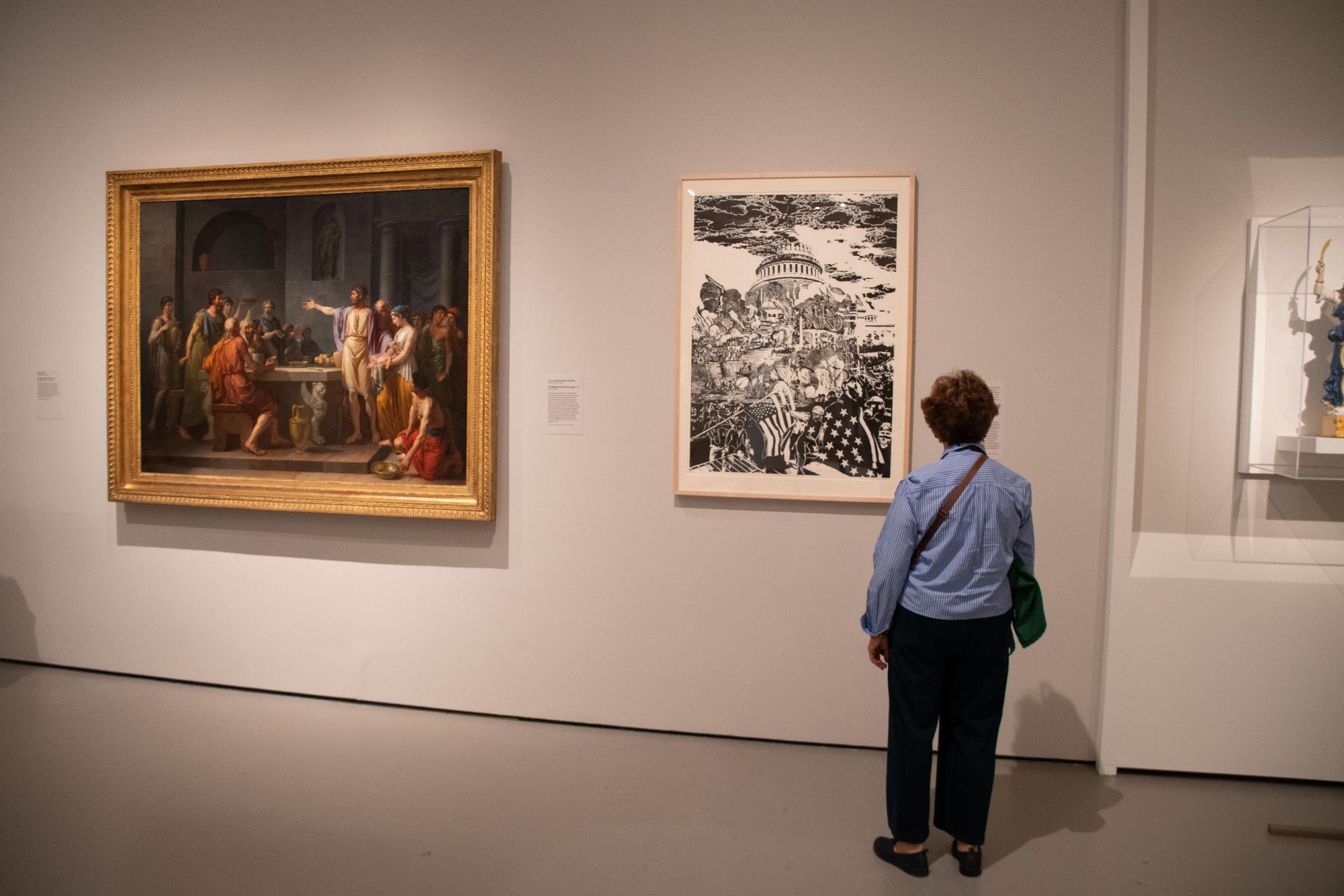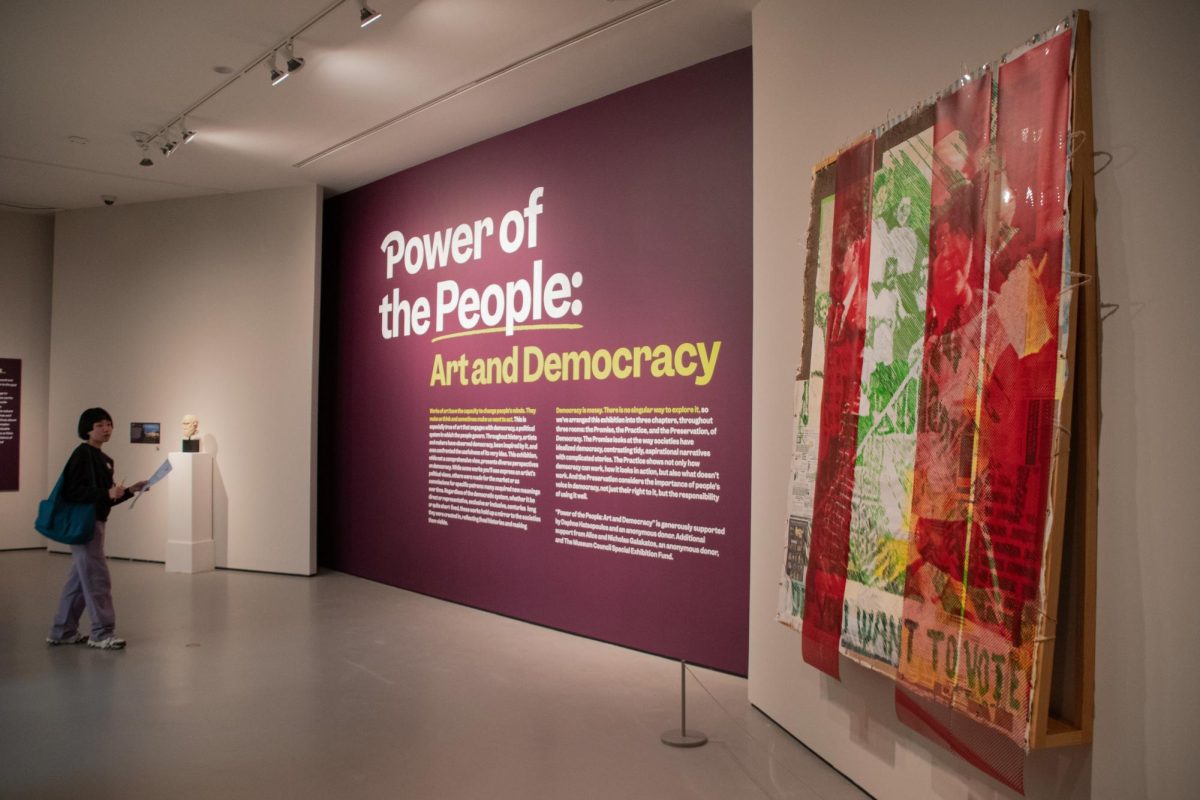As the 2024 election unfolds and political dialogue grows to a crescendo, the Museum of Fine Arts opened an apt new exhibit: “Power of the People, Art and Democracy.” The collection of 180 works, which opened Oct. 26 and will be open through Feb. 16, 2025, “invites visitors to reflect on, discuss, create and participate in the democracy we share.”
The exhibit is eclectic and at times hard to follow, exploring the complex idea of democracy through three themes: the Promise, which delves into the idealization of democracy in society; the Practice, looking at democracy in action; and the Preservation, which examines how people can effectively use their voices to protect democracy.
“I think the curators were hoping this would begin a dialogue in a way that feels inviting independent of political affiliation,” said visitor Carl Williams. “At the end of the day, we can all still care about democracy.”
“Speaking to people who are less in the government and politics mindset about democracy makes me excited,” Williams said. Williams said he studied political science in college, “and I got to be in class with other politics nerds and talk about these things in a very esoteric, lingo-heavy way, but I don’t think that’s where democracy lives. It doesn’t live in books, it lives in practice.”
One example of this practice was shown in a large area of the Preservation room devoted to posters created by students at the School of the Museum of Fine Arts in the aftermath of the 1970 Kent State Massacre, which claimed the lives of four unarmed Vietnam War protesters. These works feel particularly relevant now, after college campuses, Northeastern included, erupted in protest against the Israel-Hamas war earlier this year.
Works relating to protest led people to explore the ever-evolving nature of democracy and see how much, or how little, progress has been made. For visitor Daequan Roberts, the latter impression was given.
“I see a photo over there telling Black people to go vote for freedom,” Roberts said. “In this generation, nothing has changed. We still really need Black people to vote for freedom.”
June August, another visitor at “Power of the People,” also saw the present political climate reflected in the works of the exhibit, particularly in one image: Stanley Forman’s Pulitzer Prize winner, “The Soiling of Old Glory.” The historic photo, taken in 1976, depicts a white man attacking civil rights activist and current Northeastern professor Ted Landsmark with the American flag at the City Hall Plaza in Boston.
“I looked at this, and it reminded me of Jan. 6, the way they were stabbing people with the flag,” August said. Williams also drew comparisons with the symbolism of the American flag in “The Soiling of Old Glory.”
“There’s a work over there that includes a swastika, and the image description explains that the swastika was not a symbol associated with hate until the Nazis co-opted it, much like how this flag was not a weapon until it was grasped by someone who wanted to use it as one,” Williams said.
The events of Jan. 6, 2021 surfaced again in the Promise area of the exhibition, in William Evertson’s 2021 work “Capitol Offense,” which tied together the events of Jan. 6 with the only other attack on the Capitol in American history: the burning of Washington by British troops in 1814. This piece and many others throughout the exhibit helped to weave together the history of democracy with the political landscape of 2024. Visitors are invited to reflect on the idea that the United States was built on the notion of freedom and ask themselves whether that is still the case today.

“This is such a timely exhibition,” August said. “In fact, I wish the museum had opened this a month before the election. Maybe if more people had a chance to see it, things would be different.”
In the Practice room, a tablet asked visitors to type the word that came to mind when they heard the word “democracy.” Responses were then displayed on the wall in a word cloud. The resounding winner was “freedom.” Across the room, a video showed Americans being asked “Do you think your vote matters?” Their answer was “yes.”












